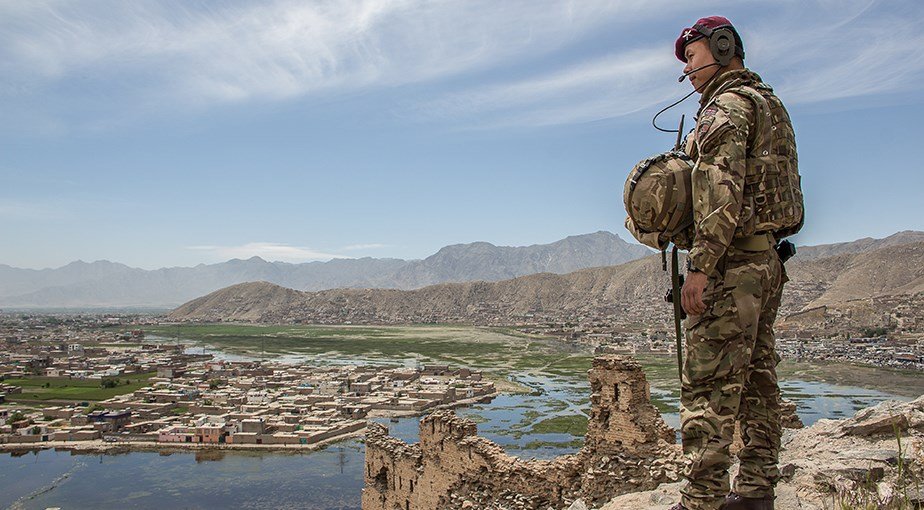History of the famous Gurkhas: a timeline
/The Gurkhas are soldiers from Nepal who are recruited into the British Army, and have been for the last 200 years. Gurkhas are known to be as fearless in combat as they are good natured in daily life.
To this day, they remain renowned for their loyalty, professionalism and bravery.
Read the history of the famous Gurkhas in our timeline:
Anglo-Nepalese War
1814 — 1816
After a series of hard fought battles, the Treaty of Segauli is made between Nepal and The Honourable East India Company. In 1815 the Gurkhas’ fighting qualities are recognised and they are first enlisted into the armies of the British Crown.
Pindari War
1817 — 1818
Following years of plundering in Gujarat and Mirzapur by the Pindaris, British and Indian Army troops, including Gurkhas, defeat the Pindari Army of 30,000 horsemen.
Anglo-Sikh War
1845 — 1846
In 1845 a Sikh army crosses the Sutlej River in the Punjab – starting a war. Gurkhas fight hard at the battles of Aliwal and Sobroan. The Commander of the Army writes of Gurkha soldiers: “They vied in ardent courage with The Grenadiers and, armed with the short weapon of their mountains, were a terror to the Sikhs”.
Second Anglo-Sikh War
1848 — 1849
A series of increasing Sikh rebellions in the Punjab against British administration lead to war. The turning point is the Battle of Chillianwalla, a savage contest with both sides suffering great numbers of casualties. Final victory goes to the British.
Indian Sepoy Rebellion
1857 — 1859
Gurkhas fight alongside the British during the Indian Mutiny, remaining loyal to the British Indian Army. Gurkhas of The Sirmoor Battalion, later to become part of today’s Brigade of Gurkhas, become official Riflemen and are honoured by Queen Victoria with a unique Truncheon in recognition of their bravery and loyalty at the siege of Delhi.
Second Afghan War
1878 — 1880
Due to concerns over Russian influence in Afghanistan, the British send a force under General Roberts, including five Gurkha regiments, to invade the country. After several major engagements, the Afghans are defeated. When General Roberts is later raised to the peerage, he chooses the image of a Gurkha to be part of his family crest.
Boxer Rebellion
1900
Gurkhas serve bravely as part of an international force sent to quell a rebellion by a secret society of nationalist insurgents in China called “Boxers”, who were fighting against foreign influence.
Tibet Expedition
1904
Colonel Francis Younghusband leads a force of British, Indian and Gurkhas to Gyantse in Tibet to negotiate and arrange reparations for previous incidents. Lt J D Grant of 8th Gurkha Rifles is awarded the Victoria Cross for an assault on the stronghold at Gyantse Jong, where he scaled a cliff under heavy fire to force a breach.
World War One
1914 — 1918
During the First World War over 90,000 Gurkhas directly serve the British Crown, of which over 20,000 are killed, wounded or missing in action. Gurkha regiments earn hundreds of gallantry awards throughout the War.
World War Two
1939 — 1945
During the Second World War over 120,000 Gurkhas directly serve the British Crown from which there are over 20,000 killed, wounded and missing in action. The Gurkhas earn over 2,500 awards for bravery.
Indian independence
1947
Of the ten Gurkha Regiments existing at Indian Independence in 1947, six remain in the Indian Army and four transfer to the British Army. These are the 2nd King Edward VII’s Own Gurkha Rifles (The Sirmoor Rifles) and the 6th, 7th and 10th Gurkha Rifles.
Malayan Emergency
1948 — 1960
The conflict in Malaya is the first in which Gurkhas fight as part of the British Army. They are committed from the outset of the Emergency and are continually on active service throughout the next twelve years, continuing to win awards for bravery in the field of combat.
Borneo Confrontation
1962 — 1966
From their bases in Sarawak, Gurkhas defend the country against Indonesian forces and engage in long range operations under the dense jungle canopy of tropical rainforest. On one such patrol Lance Corporal Rambahadur Limbu was awarded the Victoria Cross for valour.
The Gurkha Welfare Trust is founded
1969
The Gurkha Welfare Trust is founded with the primary aim of relieving poverty and distress amongst ex-Gurkha soldiers and their dependants. Today, it provides a monthly Welfare Pension and extensive medical care for its elderly ex-Gurkha beneficiaries, as well as delivering vital community aid such as water supply systems, schools and medical camps. Read more about the history of The Gurkha Welfare Trust.
The Falklands
1982
The Gurkhas’ fearsome reputation serves them well in the Falklands conflict, leading the Argentines to decide not to face them when challenged in battle. Britain successfully repels the invasion.
Afghanistan
2001 — 2014
Gurkhas play a key role in the war from the offset. Their skills in hand to hand combat are put to the test, notably Corporal Dipprasad Pun who is awarded the Conspicuous Gallantry Cross for repelling an assault in Helmand Province. Gurkhas’ peace-keeping skills and ability to build relationships with the Afghans prove invaluable. They are also charged with protecting Prince Harry during his service with the Army Air Corps.
Iraq
2003 — 2011
Gurkhas once again serve in the desert following the Allied invasion of Iraq, providing extensive medical and logistic support to the Allied forces while retracing routes their forebears had followed in the First World War.
Gurkha 200
2015
The Brigade of Gurkhas celebrates its 200th anniversary of loyal and distinguished service to the Crown. Various commemorative events are held, culminating in a spectacular pageant in London, attend by HM The Queen and other royals.










